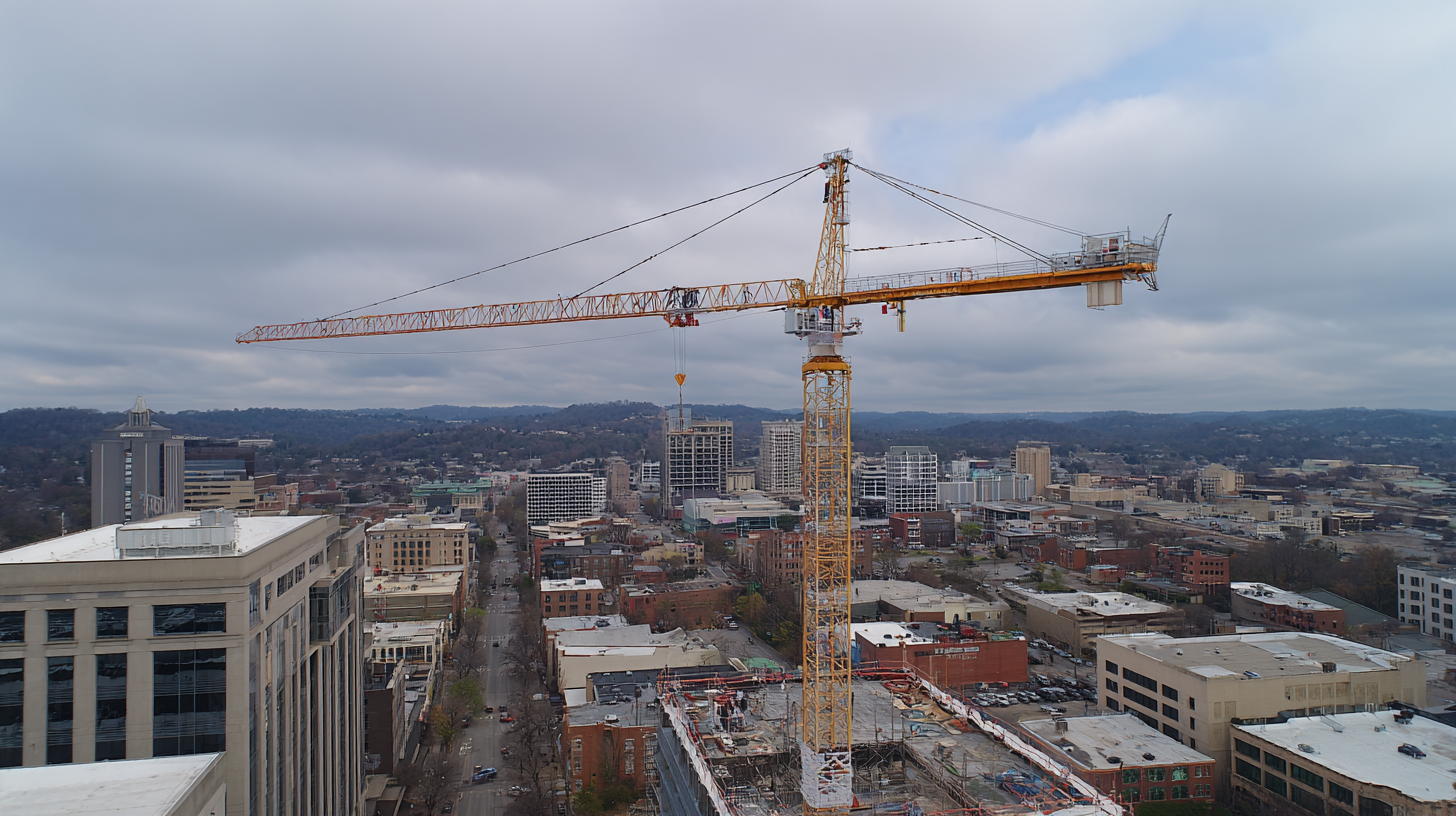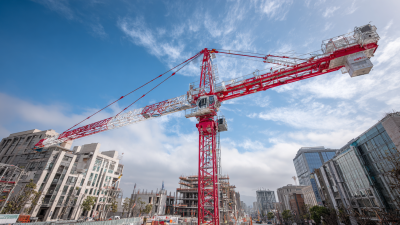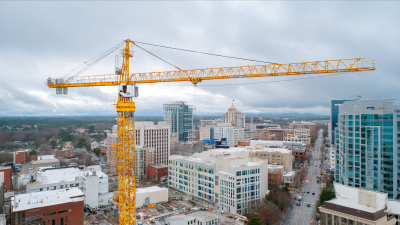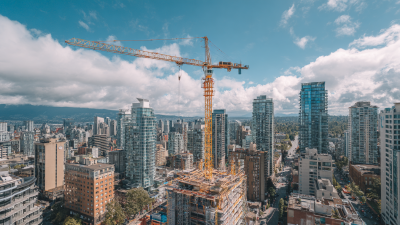In today’s fast-paced construction industry, maximizing project efficiency is critical for staying competitive. An increasing number of contractors are turning to Tower Crane Rental solutions as a cost-effective method to enhance productivity without the financial burden of purchasing heavy machinery. According to the 2021 Global Construction Equipment Rental Market report, the crane rental market is expected to grow by over 6% annually, driven by rising infrastructure projects and urban development. Utilizing rental services not only reduces upfront costs but also offers flexibility in meeting varying project demands. Moreover, the American Rental Association notes that rental equipment can minimize maintenance costs and downtime associated with ownership, further bolstering project efficiency. As construction firms seek to streamline operations and manage budgets effectively, embracing affordable Tower Crane Rental options becomes a strategic imperative for optimizing workflow and project timelines.

The construction industry continually seeks ways to maximize efficiency while minimizing costs. One viable solution is renting tower cranes rather than purchasing them outright. The tower crane rental market is projected to reach USD 22.1 billion by 2030, emphasizing the growing trend and recognizing the financial advantages that come with rental solutions. Renting allows companies to allocate capital more efficiently, avoiding the high upfront costs and ongoing maintenance expenses associated with owned equipment.
Understanding the cost benefits is crucial for construction project managers. Renting tower cranes can reduce project overhead and operational risks, providing greater flexibility to adapt to fluctuating project needs. With the Europe crane rental market expected to show significant growth across various regions, including the UK and France, it's clear that many businesses are gravitating toward this cost-effective strategy.
**Tips:** When considering crane rental, evaluate the specific project requirements to choose the right type—fixed or mobile cranes can impact productivity differently. Additionally, compare rental options and negotiate terms to secure the best rate. Using rental solutions can not only streamline operations but also enhance overall project efficiency.
| Project Type | Rental Cost (Monthly) | Purchase Cost | Total Duration (Months) | Total Cost (Renting) | Total Cost (Buying) |
|---|---|---|---|---|---|
| High-Rise Building | $4,000 | $200,000 | 12 | $48,000 | $200,000 |
| Commercial Warehouse | $3,500 | $150,000 | 10 | $35,000 | $150,000 |
| Residential Complex | $2,500 | $120,000 | 8 | $20,000 | $120,000 |
| Infrastructure Project | $5,000 | $250,000 | 15 | $75,000 | $250,000 |
In the competitive landscape of construction, maximizing project efficiency is integral to success. The tower crane rental market is projected to reach a staggering USD 22.1 billion by 2030, highlighting the increasing demand for these essential construction machines. Key factors influencing rental prices include regional demand, the availability of advanced technology, and maintenance costs, which significantly affect operational efficiency. As companies look to enhance their productivity, understanding these factors becomes crucial.
Moreover, operator efficiency plays a pivotal role in overall project timeline and cost. Research indicates that effective incentive mechanisms can improve the work efficiency of tower crane drivers, directly impacting project success. Investing in proper training is vital, as skilled operators help minimize downtime and maximize output, reflecting positively on the bottom line.
Tips for optimizing tower crane rental solutions include conducting thorough market research to understand pricing trends and ensuring the rental provider offers comprehensive support and maintenance services. Additionally, prioritizing operator training can improve efficiency, leading to successful project completions within budget and schedule constraints.
The demand for tower cranes in China reflects broader industry trends that impact rental solutions. In 2022, the tower crane rental market in the country reached approximately 107.34 billion yuan, indicating a slight decline of 2.6% from the previous year. This contraction is underscored by a sales figure of only 21,000 units for tower cranes in the same period. However, as we move into 2023, the demand for these cranes remains robust, suggesting potential recovery and growth in subsequent years.
Companies within the tower crane rental sector are evolving to meet this growing demand, focusing on affordability and efficiency to capture market share. For instance, leading rental firms are striving to establish themselves as internationally recognized brands in construction machinery rental. This push not only enhances their competitiveness but also aligns with market needs, ensuring clients have access to cost-effective and reliable crane solutions. With ongoing adjustments to supply chains and rental strategies, the industry is poised to adapt to fluctuations in demand while maximizing project efficiency.

In today's fast-paced construction environment, the effective management of resources, particularly tower cranes, can significantly influence project efficiency. By integrating Artificial Intelligence (AI) into project management strategies, companies can optimize crane usage, predict potential downtimes, and ensure seamless operations. AI-driven predictive maintenance models can foresee equipment failures, allowing managers to address issues before they impact project timelines. This proactive approach not only enhances safety but also maximizes equipment utilization, ensuring that every moment of the crane's operational capacity is effectively leveraged.

Moreover, implementing best practices for resource optimization plays a crucial role in minimizing costs and enhancing productivity on site. Strategies such as data-driven scheduling, real-time inventory tracking, and efficient workforce management can facilitate a more fluid operation. By harnessing technology and employing analytical tools, project managers can streamline workflows and boost overall efficiency. Ultimately, these innovative management practices will lead to a more cost-effective rental solution for tower cranes, paving the way for successful project completions without unnecessary delays.
In the rapidly evolving construction industry, leveraging technology is crucial for enhancing crane operation and rental efficiency. By adopting advanced software solutions, construction firms can streamline project management processes, from scheduling crane rentals to tracking operational metrics. Real-time data on crane performance not only helps in optimizing the use of resources but also allows companies to predict maintenance needs, thus minimizing downtime and reducing costs.
Moreover, the integration of smart technologies, such as IoT and automated systems, has transformed how tower cranes are operated. Operators can now remotely monitor and control cranes, ensuring precise movements and improved safety measures. This technological shift not only enhances operational efficiency but also allows for the effective allocation of affordable rental solutions. As construction sites increasingly embrace these innovations, the overall productivity and cost-effectiveness of projects are significantly improved, paving the way for a smarter and more efficient construction landscape.






